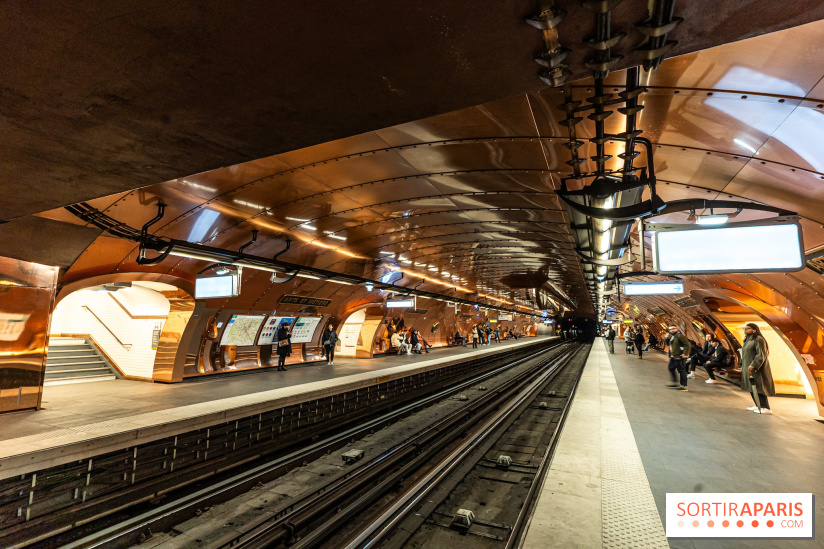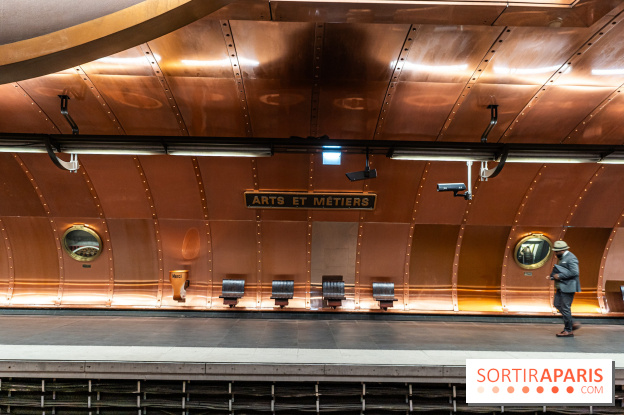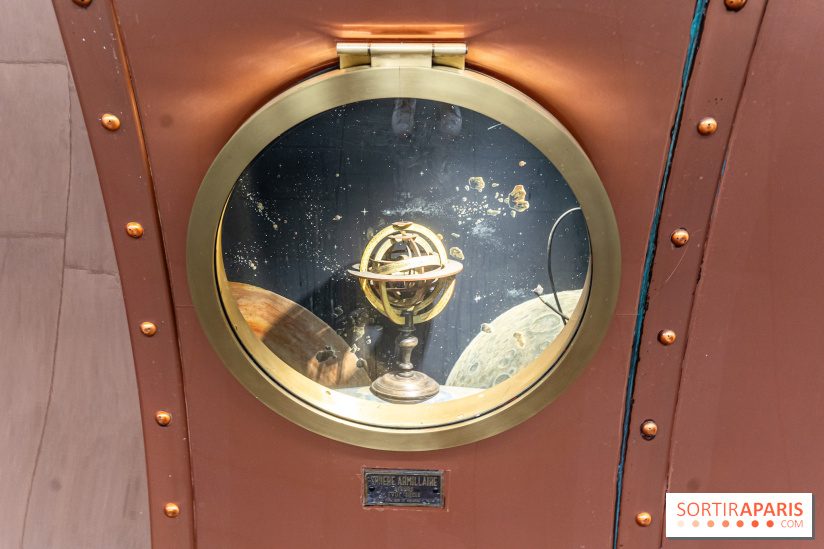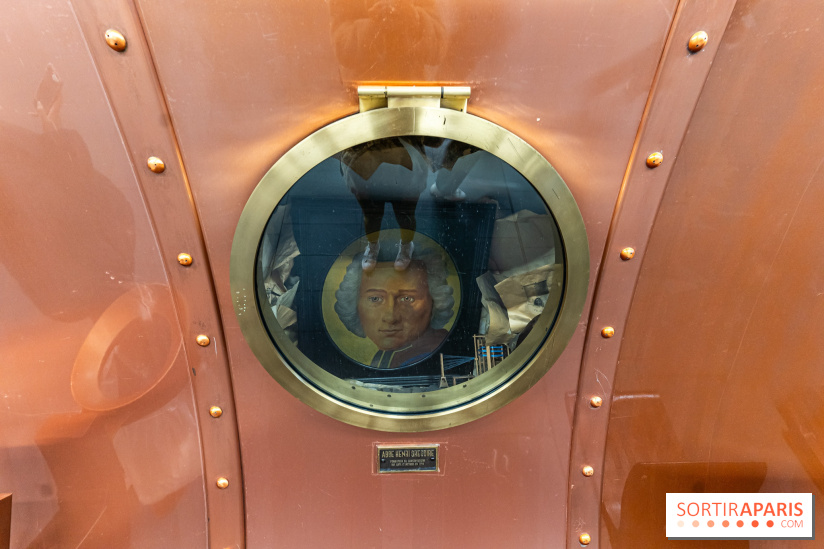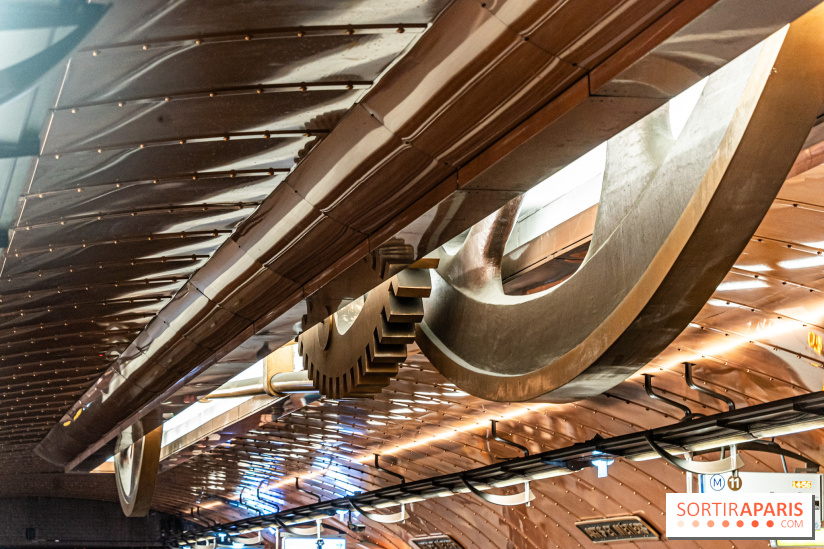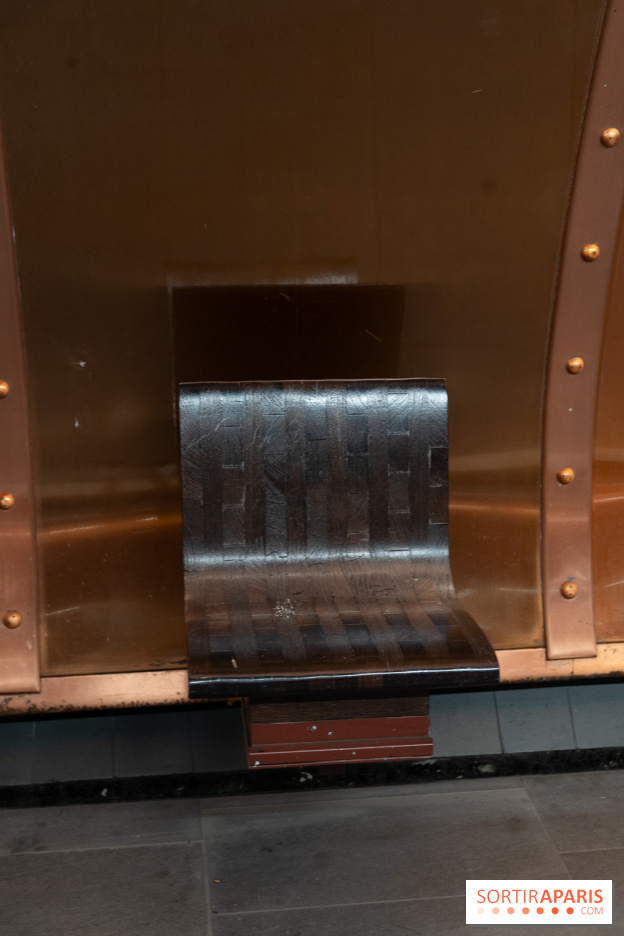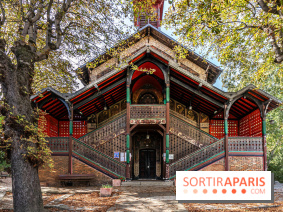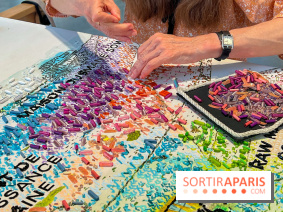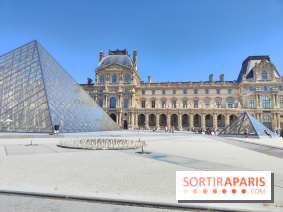Considered one of the most beautiful stations on the Paris metro, Arts et Métiers sees thousands of passengers pass through every day. You may not notice it by now, but have you ever wondered why it looks the way it does? In any case, when you pass through the station on line 11, its exceptional design is surprising. Why does this station look like a submarine? What's the story behind this radical transformation?
Before 1994, Arts et Métiers looked like many other Paris stations, with its typical white tiles. That all changed in October of that year, when it was refurbished to celebrate a major event: the bicentenary of the Conservatoire national des Arts et Métiers. This radical change was designed not only to mark the anniversary, but also to provide a unique experience for people in transit. The Conservatoire National des Arts et Métiers was originally designed to train technicians and engineers through demonstrations using scientific and technical objects. Today, it houses the Musée des Arts et Métiers, which deals with major technical and technological innovations.
The relationship between art and the metro is not a new one. It began with Hector Guimard, an architect commissioned in 1900 by the Compagnie du Chemin de Fer Métropolitain (CMP), forerunner of the RATP, to create 167 structures, including the famous aediculae at the entrances to the Paris metro, symbols of Art Nouveau. This initiative was an expression of audacity and modernity, comparable to calling on a renowned architect of today's era. Although the post-war years saw a decline in this artistic fusion, the 1970s saw a revival with the creation of cultural and artistic stations. For example, the Louvre-Rivoli station exhibited casts of sculptures from the museum as early as 1968, while Arts et Métiers was inspired by Jules Verne's Nautilus. This synergy between art and public transport is not unique to Paris: similar projects exist in Vienna, Naples and Stockholm, integrating art into the metro on a permanent basis, illustrating a worldwide tradition of artistic commissions in public transport.
The partnership between the Musée des Arts et Métiers and RATP gave rise to this bold project. The station was transformed into a space evoking the world of Jules Verne's famous Nautilus submarine, now a symbol of technical progress. Belgian cartoonist and scenographer François Schuiten, in collaboration with French scriptwriter Benoît Peeters, was the creative brains behind the project. A big name in Belgian comics, François Schuiten is one of the authors of the series Les Cités Obscures, which explores imaginary cities with vertiginous, retro-futuristic architecture. His work on Arts et Métiers is an extension of this aesthetic, where the metro becomes a gateway to a parallel world.
Their inspiration was drawn from the fantastic stories of Jules Verne, notably"Twenty Thousand Leagues Under the Sea" and"The Mysterious Island". The station is now covered in riveted copper plates, creating a captivating retro-futuristic atmosphere. The absence of advertising and the meticulous details, such as the cogs and mechanisms integrated into the vaulting, reinforce this unique ambience.
Inside, brass portholes display models of historic inventions, paying homage to the Conservatory. These miniature exhibits offer a fascinating insight into the scientific and technical advances celebrated by the museum.
The station names are adorned with gilding, as are the bolts securing the copper and the outlines of the portholes arranged along the "tunnel". Above, imposing gears adorn the ceiling, and the classic seats have the distinction of being made of wood.
François Schuiten has also contributed his unique talent to other projects, such as the Porte de Hal station in Brussels and the Jules Verne house in Amiens. His passion for architecture, history and science fiction is evident in every one of his works.
Like many Paris metro stations, Arts et Métiers was closed during the Occupation between 1939 and 1944. However, rumors circulate that it was used discreetly by the Resistance to carry messages and equipment. Located close to the Conservatoire des Arts et Métiers, which housed scientists and engineers, it is said to have served as a meeting point for certain Resistance fighters linked to the world of academia and industry.
Today, the connection between lines 3 and 11 is marked by a long corridor and several staircases. But in the 1960s, an escalator was installed to facilitate access between the two levels. Deemed too cumbersome and inefficient due to the narrowness of the station, it was dismantled in the 1980s, making way for the steps we know today. A forgotten detail that bears witness to the metro's many transformations over the years.
The Arts et Métiers metro station reveals a unique face in Parisian transport. It's an unusual journey into the history of human creativity and ingenuity. A station where the past meets the future, where art meets the daily train. For history buffs, science-fiction fans and those who love unusual places, Arts et Métiers station offers a journey into another world, 20,000 leagues under the sea right in the heart of Paris.
References :
Location
Arts et Métiers station
51 Rue de Turbigo
75003 Paris 3
